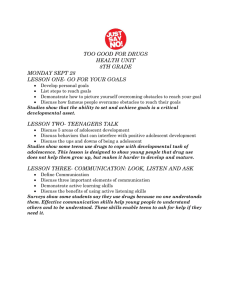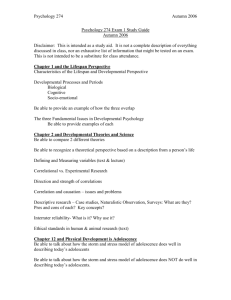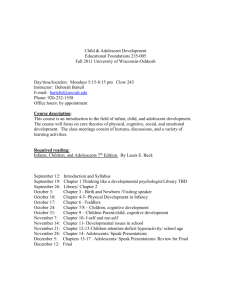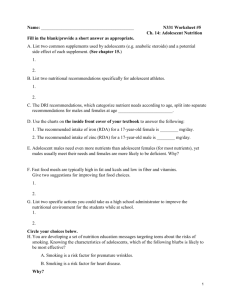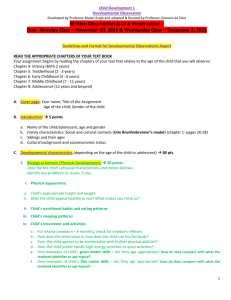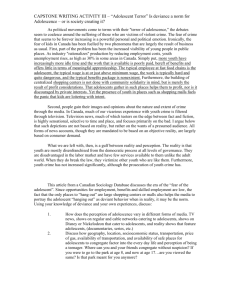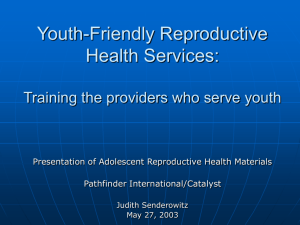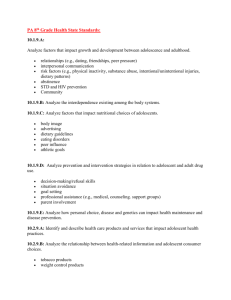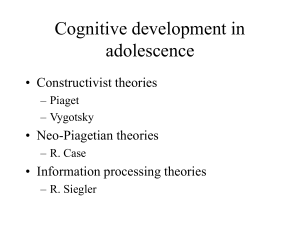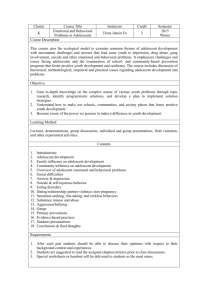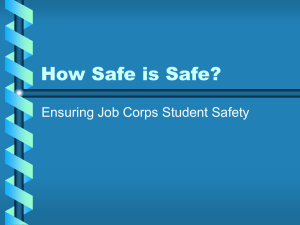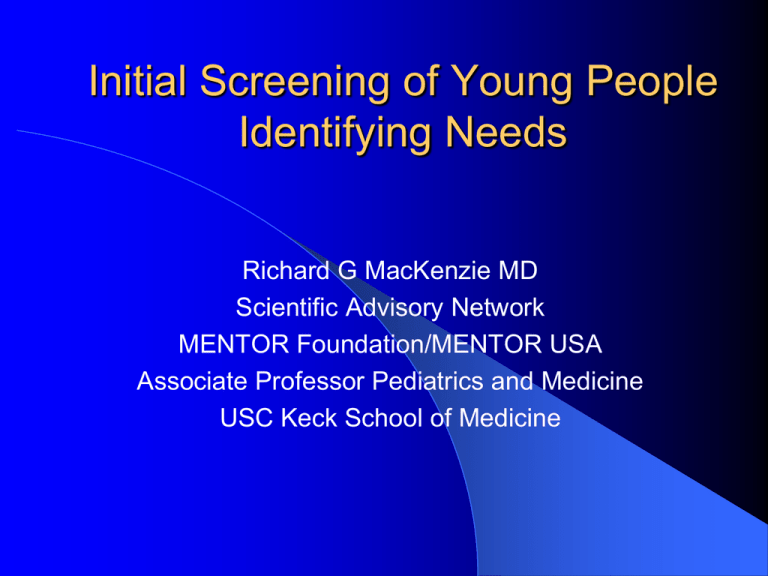
Initial Screening of Young People
Identifying Needs
Richard G MacKenzie MD
Scientific Advisory Network
MENTOR Foundation/MENTOR USA
Associate Professor Pediatrics and Medicine
USC Keck School of Medicine
Fig
2.4
Drug Abuse is Especially Prevalent in Youth
and Young Adults
Percent Using in Past Month, 2008 National Survey on Drug Use and Health, SAMHSA
25
21.5
20
18.4
15.2
15
13.0
10
8.6
9.6
8.6
6.3
5
7.0
4.3
3.3
5.0
3.0
1.0
0
12-13 14-15 16-17 18-20 21-25 26-29 30-34 35-39 40-44 45-49 50-54 55-59 60-64 65+
Age in Years
2
Risk
The probability (risk) that any healthy or
unhealthy behavior will become ‘habit’ is
greatest during periods of rapid personal
change or development
Human Development
The unfolding of an individuals potential
within a cultural context and in which the
impact of these cultural values, both
positive and negative, are acknowledged
Adolescent Development
Issues
Assumptions
Adolescence is like a ‘second birth’ – a
birth into life - and like the first birth is
greatly susceptible to the negative
influences in the environment
Behaviors during adolescence are merely
situational expressions of maturational
events
Adolescent Development
Issues
Assumptions
What adults see as ‘problems’ - adolescents
often see as ‘solutions’
The health of adolescents is particularly
inter-dependant on their behaviors, that in
turn, is greatly influenced by the social and
family environment in which they live.
Adolescent Development
Issues
Assumptions
Adolescents grow up in a world their
parents have never known
The influence of the family has become
weakened in modern society in as much
‘values’ and social behaviors are often
promoted outside of family control.
Adolescent Developmental
Issues
Adolescents with undiagnosed
psychological disorders will often
‘discover’ the benefits of illicit drug use
ADD - Tobacco, amphetamines
Depression - stimulants, Ecstasy, alcohol
Social withdrawal (shy) - marijuana, alcohol,
stimulants
Anxiety - Tobacco, marijuana, alcohol
Adolescent Development
Issues
Assumptions
For a variety of reasons, some youth are
more resilient to life’s risks. Resilience is a
characteristic of a healthy adolescence that
allows the youth to developmentally resist
choosing risk behavior to satisfy a
developmental challenge.
Drug Use & Development
Developmental lubricant
‘Problem’ vs. ‘solution’
Family issues
Resilience
Self-medication
Higher-risk subgroups……..
Drug Use & Development
Higher-risk subgroups
–
–
–
–
–
–
–
–
–
School failure/dropout
Impoverished youth, not just poor youth
Youth with other ‘delinquent’ behaviors
Growing up abused or in a chaotic family
Youth from families with inconsistent parent practices
Youth in families that ‘relocate’ frequently
shy, poor social skills
low self esteem, depressed youth
gay or questioning youth
Risk of Drug Use is Greatest
During Developmental
Transitions
Transfers to new school during adolescence
School advancements
Adapting to new peer group
Beginning college/university
Marriage
Entering workforce
Risk of Drug Use is Greatest
with Failure to Make
Transitions
School failure
Dropping out of school
Poor social coping skills
Affiliation w/ risk-taking peers
Perception of approval for drug use
Drug Use
Drug use and abuse is usually embedded within
other adolescent ‘life spaces or activities’
–
–
–
–
–
Recreation
Sports/pass-times
Social times
Alone time
Relationships
DYNAMIC DEVELOPMENT
MODEL
Parents/Family/Peers
Social
Ecology
Physical
And
Psychological
Development
Adolescent Risk Profile
(CHLA)
H – Home, Harassment
E – Education, Eating, Exercise,
Employment
A – Ambition, Accidents, Affect, Alcohol
D – Drugs, Dieting, ‘Dating’
S – Sex, Suicide, Safety, Sexting


